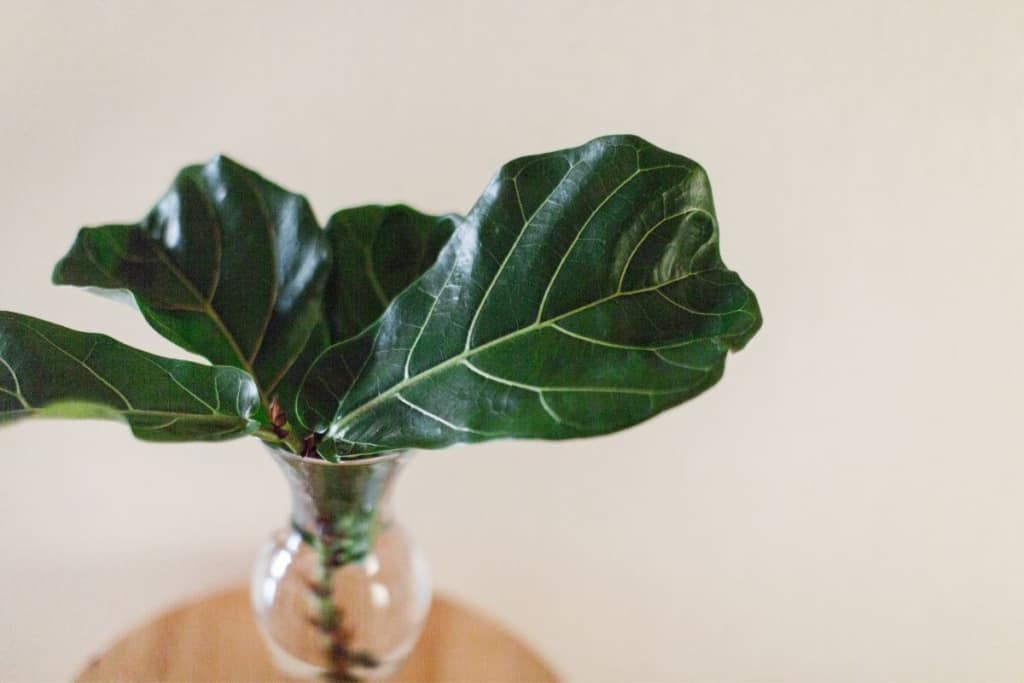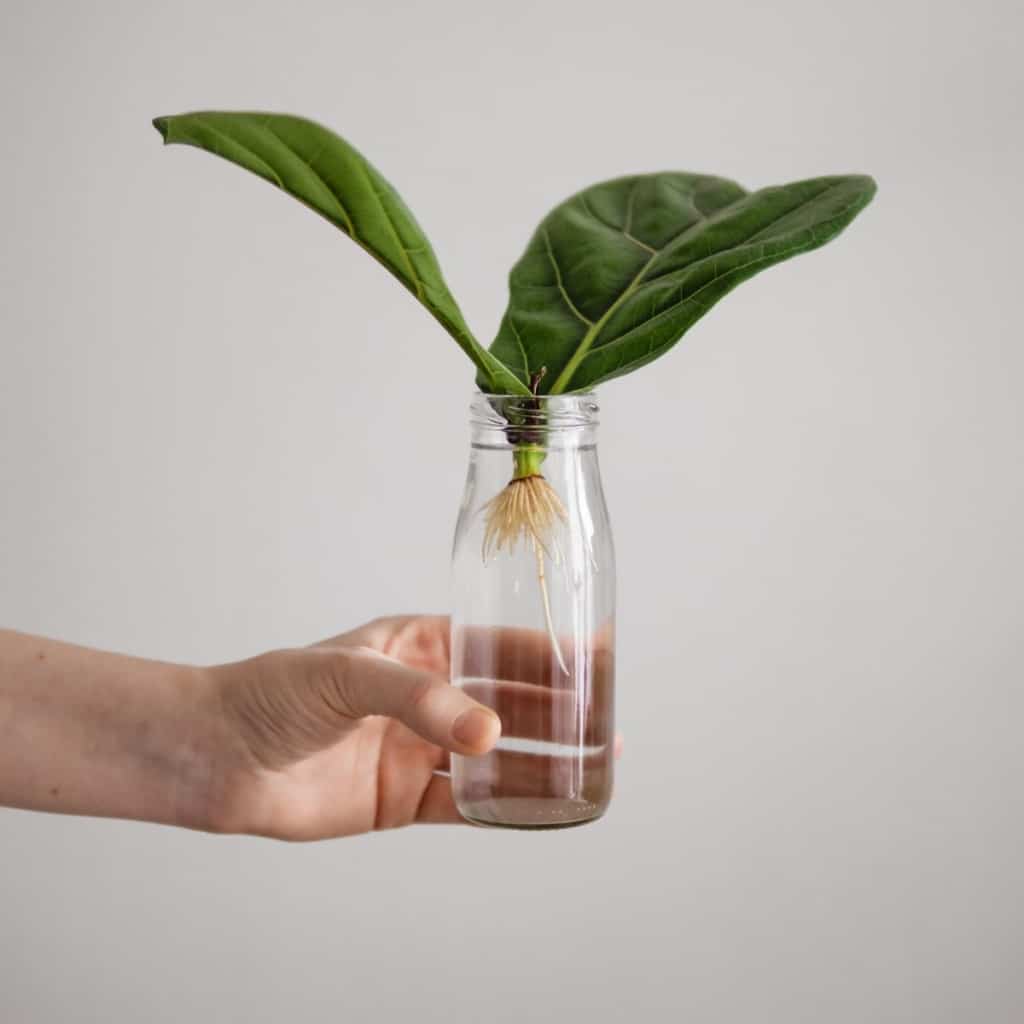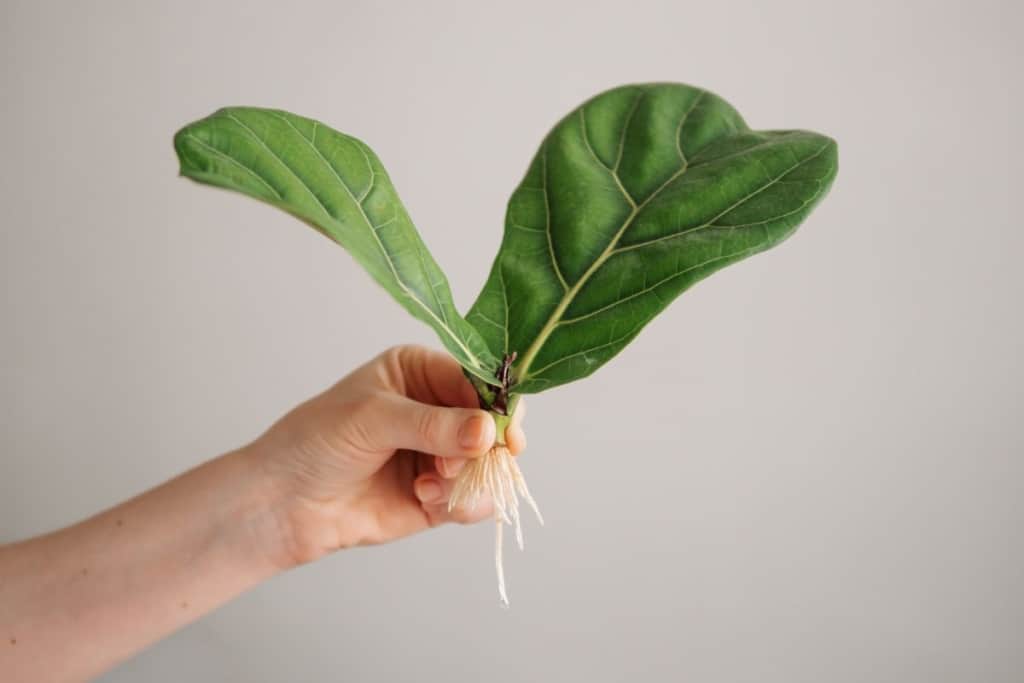If you’re a plant enthusiast, chances are you’ve come across the popular fiddle leaf fig plant. This plant’s large, violin-shaped leaves and statement-making presence make it a favorite among indoor plant lovers. While you may have already mastered how to care for your fiddle leaf fig, have you ever considered propagating it? In this blog post, we’ll dive into how to propagate fiddle leaf fig plants, so you can expand your plant collection and even share the joy of this beautiful plant with your friends.

Propagating fiddle leaf fig plants is a great way to grow your indoor garden without having to buy new plants. Not only can it save you money, but it’s also an opportunity to learn about the fascinating process of plant propagation. Whether you’re a seasoned plant parent or a beginner, this guide will teach you how to propagate fiddle leaf fig plants successfully. From understanding the different propagation methods to providing the ideal growing conditions, we’ll cover everything you need to know to propagate your fiddle leaf fig and watch it thrive.
Contents
- 1 Preparing to Propagate
- 2 How To Propagate Fiddle Leaf Fig
- 3 Benefits of Propagation
- 4 Frequently Asked Questions
- 4.1 How long does it take for a fiddle leaf cutting to root?
- 4.2 Do you need rooting hormone to propagate fiddle leaf fig?
- 4.3 What is a homemade rooting hormone for fiddle leaf fig?
- 4.4 Can you cut the top off a fiddle leaf fig and plant it?
- 4.5 What happens if you cut the top off a fiddle leaf fig?
- 4.6 Where do you cut fiddle leaves to propagate?
- 4.7 Can I propagate fiddle leaf fig from a leaf?
- 4.8 How long does it take to propagate a fiddle leaf fig leaf?
- 4.9 How do you thicken a fiddle leaf fig trunk?
Preparing to Propagate
Before you begin propagating your fiddle leaf fig plant, it’s important to prepare and gather the necessary supplies. Additionally, you’ll need to choose a healthy plant to propagate from and select the right leaves for your cuttings.
Supplies Needed
To propagate your fiddle leaf fig plant, you’ll need the following supplies:
- Pruning shears or a sharp knife: You’ll need a tool to make clean cuts when taking your cuttings.
- Rooting hormone: This is an optional but helpful tool that can help your cuttings develop roots more quickly.
- A container with drainage holes: You’ll need a pot or container to plant your cuttings in.
- Potting soil: Use a well-draining potting mix for your cuttings.
- Water: You’ll need to water your cuttings regularly to keep the soil moist and promote root growth.
- Plastic bag or plastic wrap: This can help create a humid environment for your cuttings as they root.
Choosing a Healthy Plant
When choosing a fiddle leaf fig plant to propagate from, it’s important to select a healthy plant with no signs of disease or pest infestations. Look for a plant with firm leaves, no brown spots or discoloration, and a strong stem. It’s also a good idea to choose a plant that’s already producing new growth, as this indicates that it’s in good health and will likely produce healthy cuttings.
Selecting Leaves for Cuttings
When selecting leaves for your cuttings, choose leaves that are healthy, undamaged, and mature. Mature leaves are thicker and more established than new growth, making them better candidates for propagating. Look for leaves that are at least six inches long and have a stem that’s at least an inch or two long. Avoid taking leaves that are yellowing or have any spots or blemishes, as these may not propagate successfully. Additionally, make sure to use clean pruning shears or a sharp knife to take your cuttings to avoid introducing any bacteria or disease to your plant.
How To Propagate Fiddle Leaf Fig
In this section, we’ll dive into the different propagation methods you can use to propagate your fiddle leaf fig plant.
Water Propagation Method

One of the most popular ways to propagate fiddle leaf fig plants is through the water propagation method. This method involves placing the cuttings in a container of water to allow them to develop roots before transplanting them into soil. Here’s how to do it:
1. Taking the Cutting from the Plant
To take a cutting from your fiddle leaf fig plant, use sharp pruning shears or a knife to make a clean cut just below a node or leaf. Make sure the cutting is at least six inches long and has a stem of one to two inches. Remove any lower leaves from the stem, leaving just a few at the top. This will help the cutting focus its energy on developing roots rather than supporting leaves.
2. Placing the Cuttings in a Container of Water
Once you have your cuttings, fill a container with water and place the cuttings in it. Make sure the water covers the nodes or leaf where you made the cut. Place the container in a bright, indirect light location, and avoid direct sunlight, which can cause the water to heat up and promote the growth of algae.
3. Monitoring and Maintaining the Water Level in the Container
It’s essential to monitor and maintain the water level in the container to prevent the cuttings from drying out or becoming waterlogged. Check the water level regularly, and add more water as needed to keep the nodes or leaf submerged. You can also add a small amount of rooting hormone to the water to help speed up the rooting process.
4. When to Transplant Cuttings into Soil
After a few weeks, your cuttings should start to develop roots. Once the roots are at least two inches long, you can transplant the cuttings into soil. Gently remove the cuttings from the water and plant them in a well-draining potting mix. Water the soil well and place the plant in a bright, indirect light location, avoiding direct sunlight. Over time, your cutting will continue to grow and develop into a new fiddle leaf fig plant.
Soil Propagation Method

Another popular method for propagating fiddle leaf fig plants is the soil propagation method. This method involves planting the cuttings directly into soil rather than placing them in water. Here’s how to do it:
1. Selecting Well-Draining Soil for Potting
To ensure the success of your soil propagation, it’s important to select a well-draining potting mix. Choose a mix that contains a blend of peat moss, perlite, and vermiculite to create a lightweight and well-draining soil that will encourage root growth.
2. Planting the Cuttings
Once you have your potting mix, fill a container with the soil, leaving a few inches of space at the top. Make a small hole in the soil with your finger and gently place the stem of the cutting into the hole, pressing the soil around it to hold it in place. You can plant multiple cuttings in the same container, as long as you give them enough space to grow and develop.
3. Caring for the Cuttings
After planting your cuttings, water them thoroughly to help settle the soil around the stems. Keep the soil consistently moist, but not waterlogged, by watering as needed. Check the soil regularly to ensure it doesn’t dry out, but also be careful not to overwater, which can lead to root rot.
Place the container in a bright, indirect light location, and avoid direct sunlight, which can scorch the leaves and damage the cuttings. You can also cover the container with a plastic bag or plastic wrap to create a humid environment that will encourage root growth. Make sure to check the cuttings regularly and remove any leaves that start to yellow or wilt.
With the right care, your cuttings should start to develop roots and new growth within a few weeks. Once the cuttings have established roots and are showing new growth, you can transplant them into individual pots or a larger container to continue growing into mature fiddle leaf fig plants.
Related Post:
7 Ways How To Grow More Leaves On Fiddle Leaf Fig
Benefits of Propagation
Propagating fiddle leaf fig plants not only allows you to expand your collection, but it also comes with several benefits. For starters, it’s an excellent way to give your plant a new lease of life. Over time, your fiddle leaf fig may outgrow its current pot, become leggy, or develop some issues like root rot or pest infestations. Propagating allows you to address these issues by creating a new, healthy plant that can start afresh in a new pot.
Additionally, propagating fiddle leaf figs can help you save money. If you’ve ever shopped for houseplants, you’ll know that they can be quite expensive, especially larger ones like fiddle leaf figs. By propagating your fiddle leaf fig, you can grow new plants for yourself or even share them with friends without having to spend a fortune.
Propagation is also an opportunity to learn more about your plant and its growth habits. As you go through the process of propagating your fiddle leaf fig, you’ll gain a deeper understanding of how it grows, how it develops roots, and how it responds to different growing conditions. This knowledge can be useful in caring for your existing fiddle leaf fig plants and any other plants you may have in your collection.
Related Post:
Leaning Fiddle Leaf Fig (8 Causes & Solutions)
Frequently Asked Questions
If you’re new to propagating fiddle leaf figs, you may have a few questions. Here are some of the most common questions people ask about propagating fiddle leaf fig plants.
How long does it take for a fiddle leaf cutting to root?

It can take anywhere from 4-6 weeks for a fiddle leaf cutting to start developing roots, but it may take longer in some cases. The time it takes for a cutting to root will depend on factors like the health of the cutting, the propagation method used, and the environmental conditions.
Do you need rooting hormone to propagate fiddle leaf fig?
Rooting hormone can be helpful when propagating fiddle leaf figs, but it’s not strictly necessary. While rooting hormone can speed up the rooting process and increase the success rate of your cuttings, it’s still possible to propagate fiddle leaf figs without it.
What is a homemade rooting hormone for fiddle leaf fig?
If you prefer a natural alternative to synthetic rooting hormone, you can try making a homemade rooting hormone using willow water. To make willow water, cut fresh willow branches and soak them in water for several days. The resulting solution contains natural rooting hormones that can help your cuttings develop roots.
Can you cut the top off a fiddle leaf fig and plant it?
Yes, you can cut the top off a fiddle leaf fig and plant it to propagate a new plant. This method is called “topping,” and it involves removing the top portion of the plant and rooting it in water or soil.
What happens if you cut the top off a fiddle leaf fig?
When you cut the top off a fiddle leaf fig, the plant will redirect its energy to growing new branches and leaves from the remaining stem. If done correctly, topping can result in a bushier, fuller plant.
Where do you cut fiddle leaves to propagate?
To take cuttings for propagation, choose a healthy stem that has at least one or two leaves. Cut the stem just below a leaf node, making sure to use a sharp, clean cutting tool to avoid damaging the stem.
Can I propagate fiddle leaf fig from a leaf?
While it’s possible to propagate fiddle leaf figs from a single leaf, it’s not the most reliable method. Leaf propagation can be challenging and often requires a lot of patience, as it can take several months for the cutting to develop roots and start growing.
How long does it take to propagate a fiddle leaf fig leaf?
Leaf propagation can take several months to produce a new plant, so it’s important to be patient and consistent with your care. Make sure to keep the soil moist and the cutting in a warm, bright location to encourage rooting and growth.
How do you thicken a fiddle leaf fig trunk?
To thicken the trunk of your fiddle leaf fig, you can prune the top of the plant to encourage branching and thicker growth. You can also fertilize the plant regularly and provide it with bright, indirect light to promote healthy growth. Additionally, avoid overwatering, as this can lead to root rot and weaken the plant.
